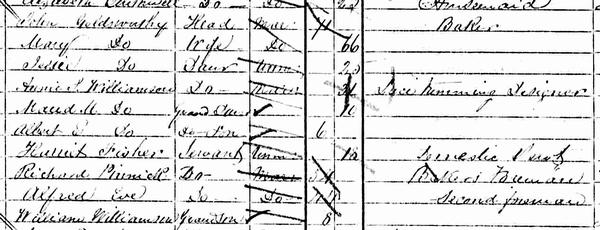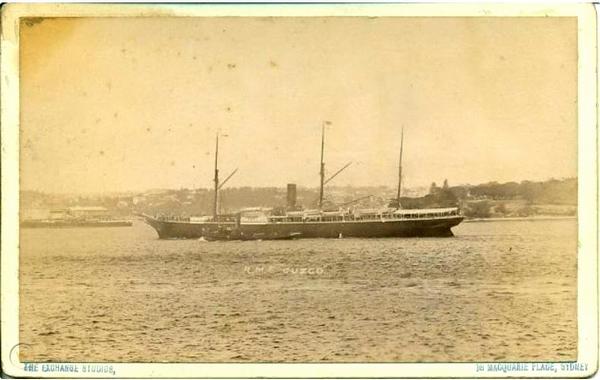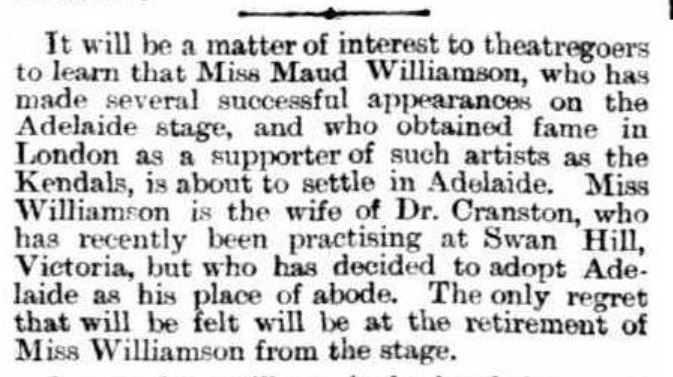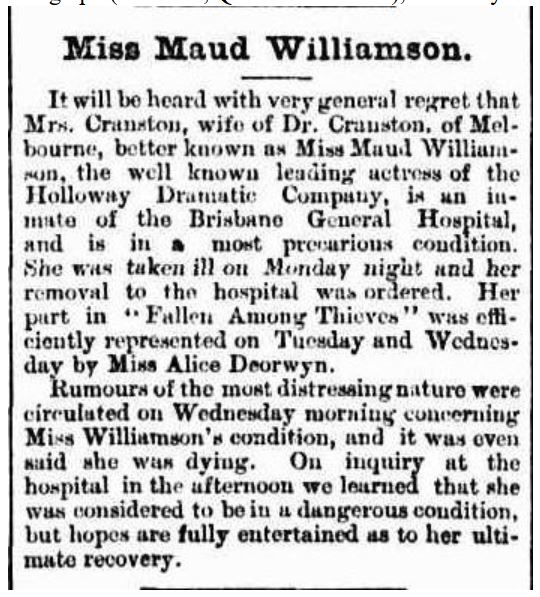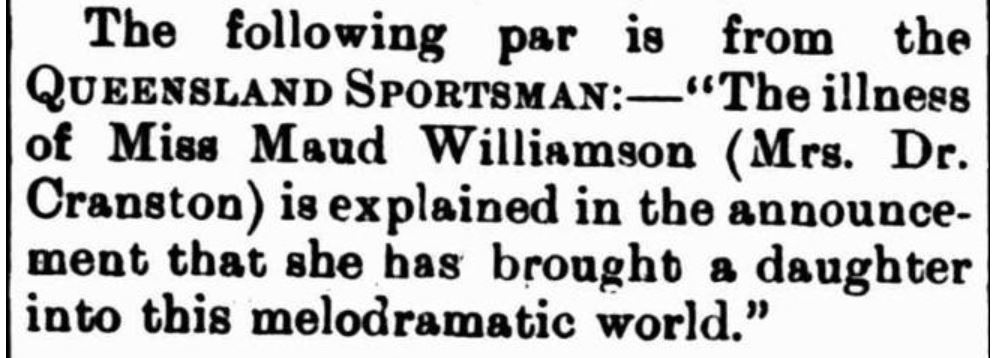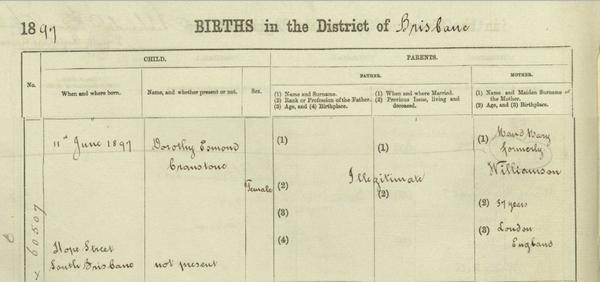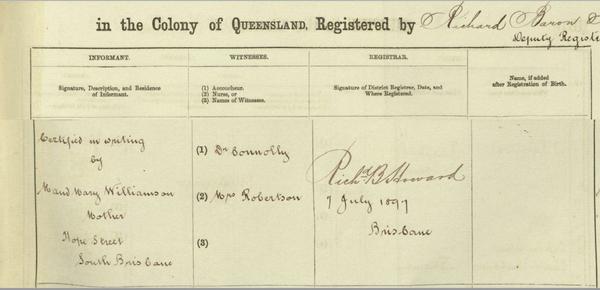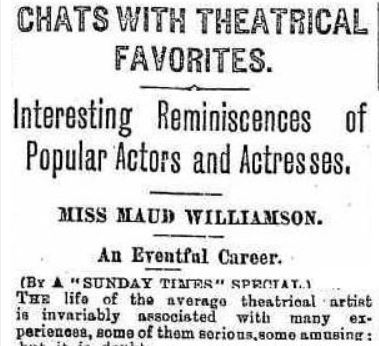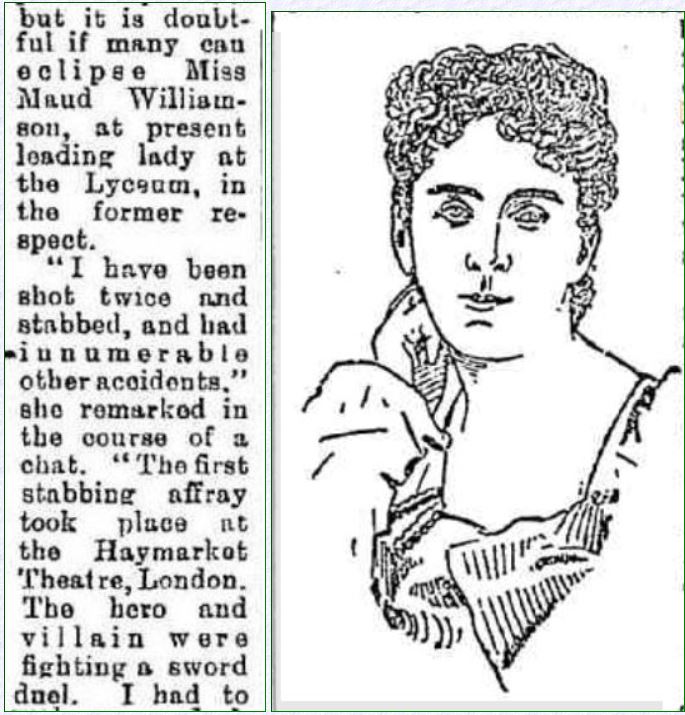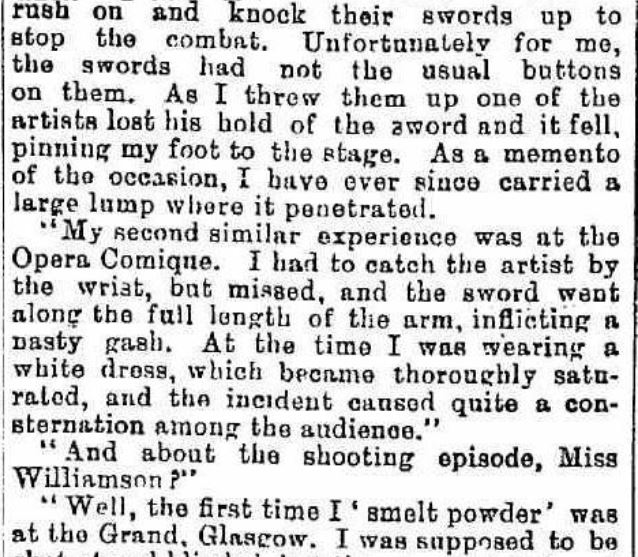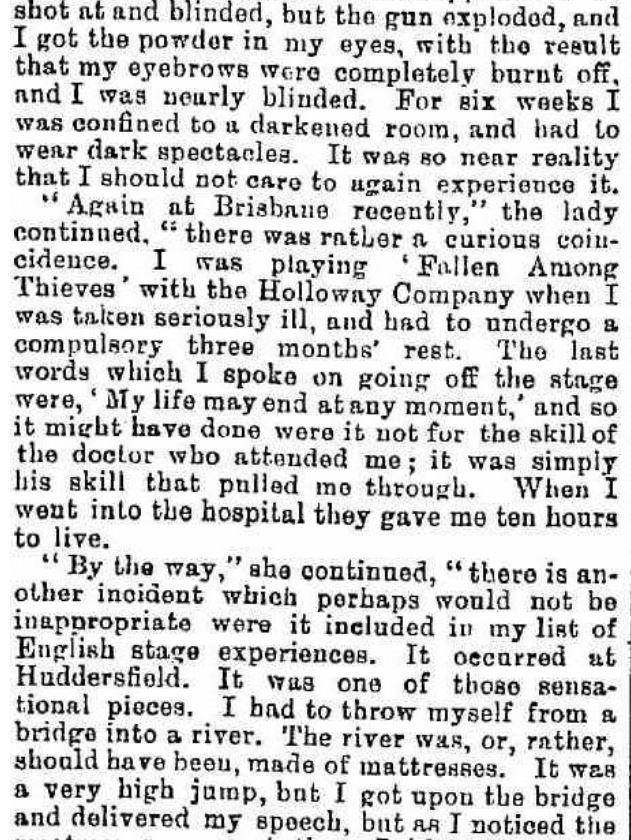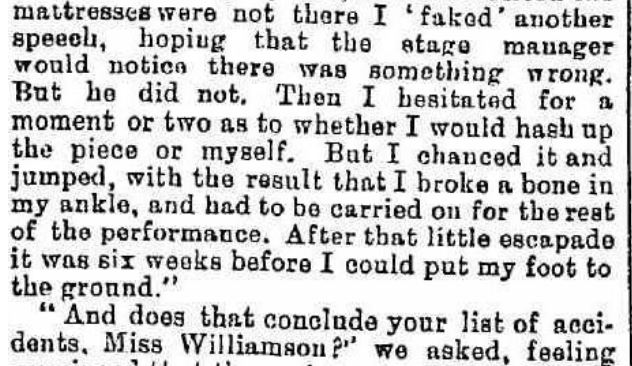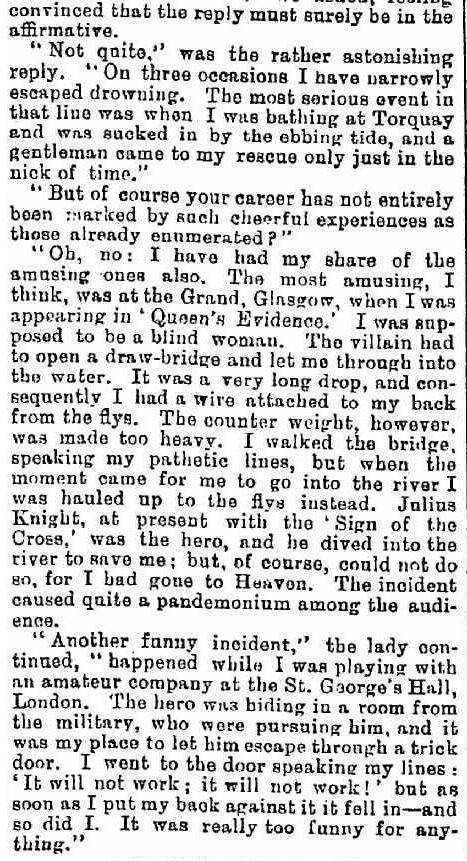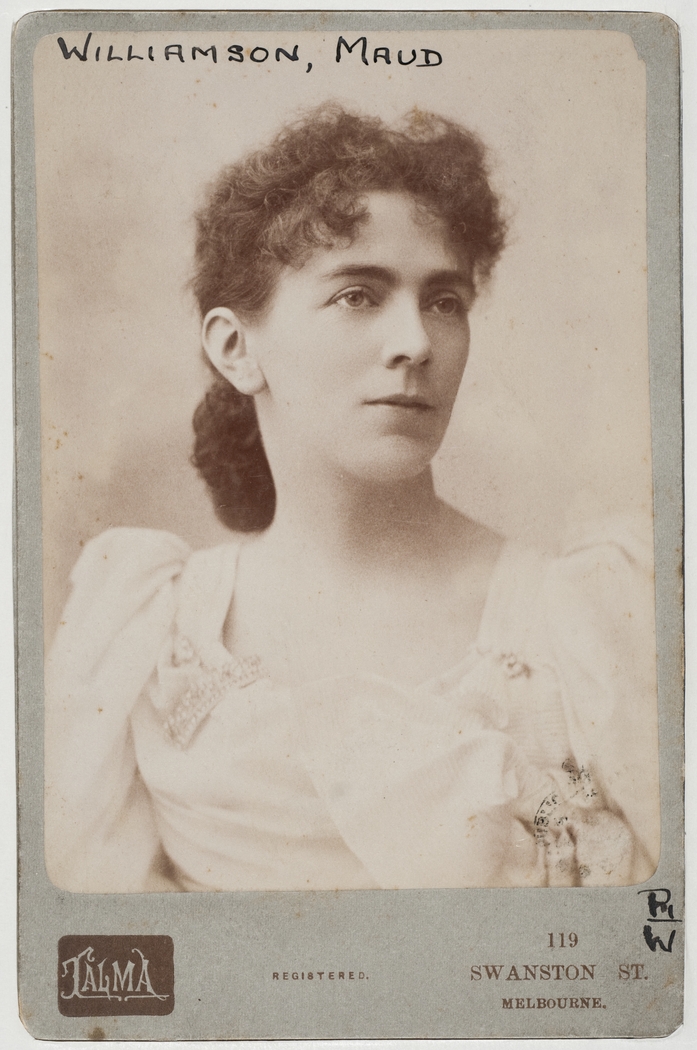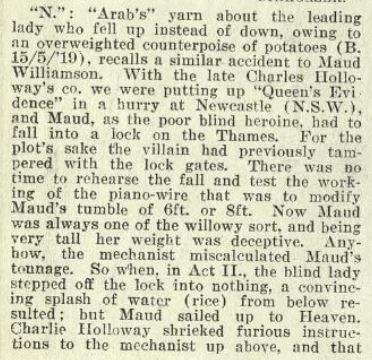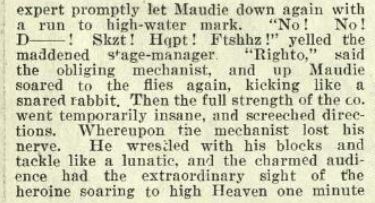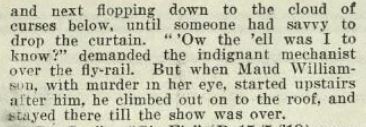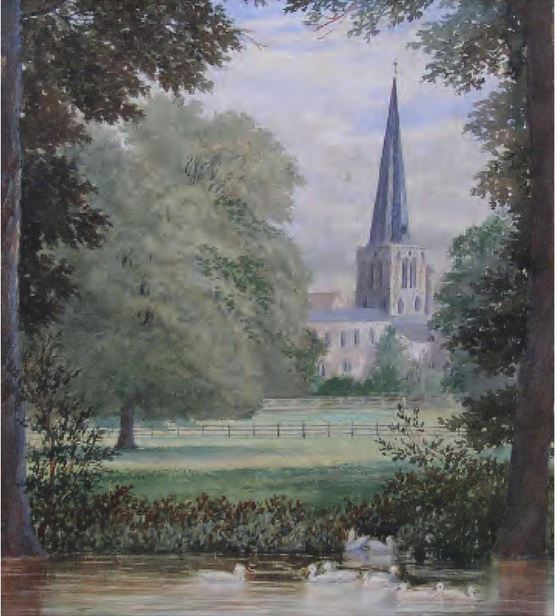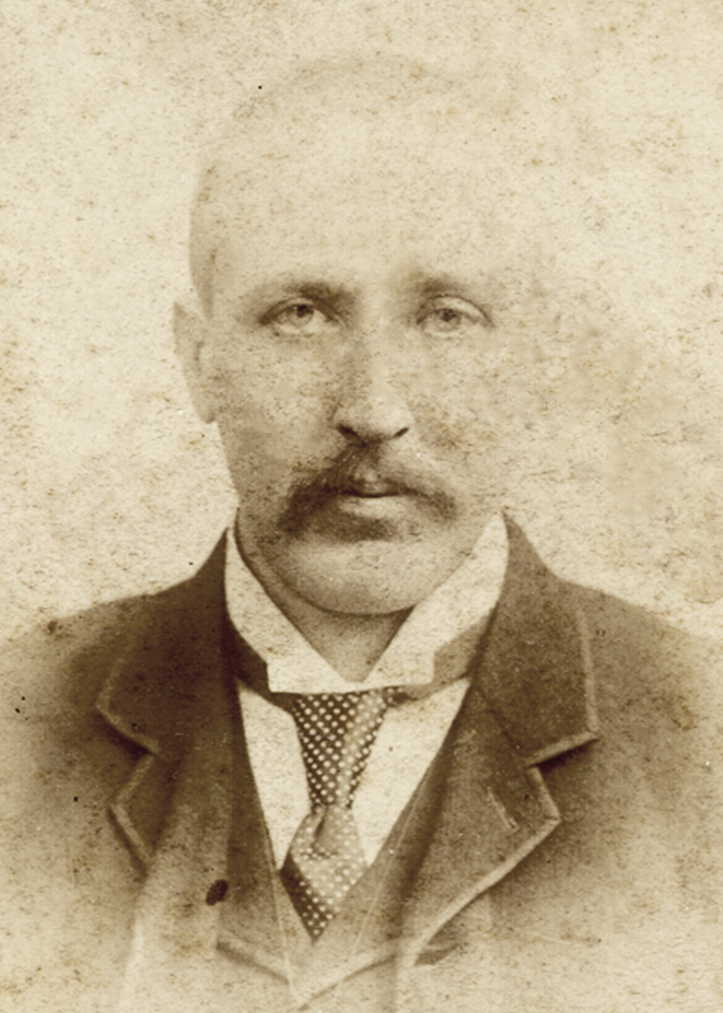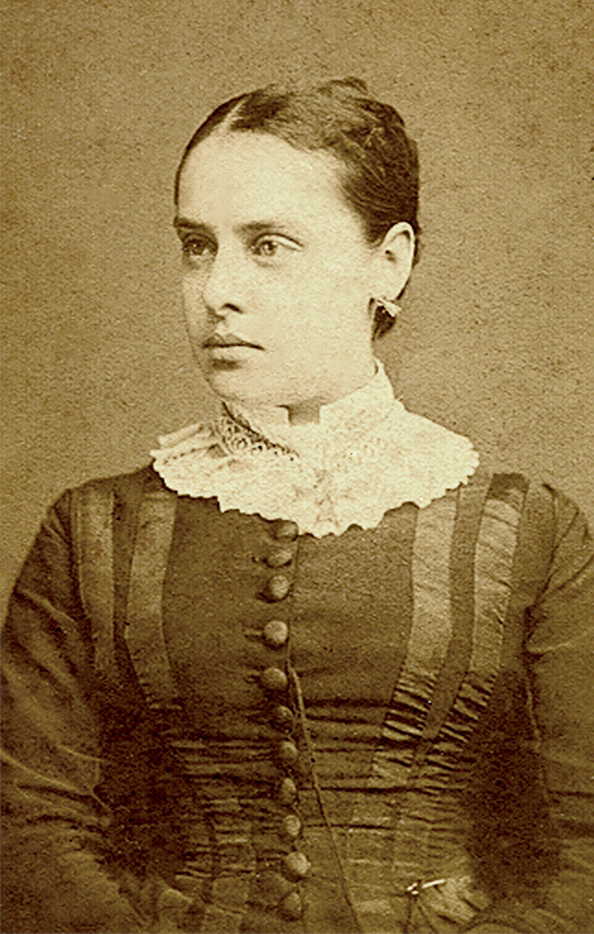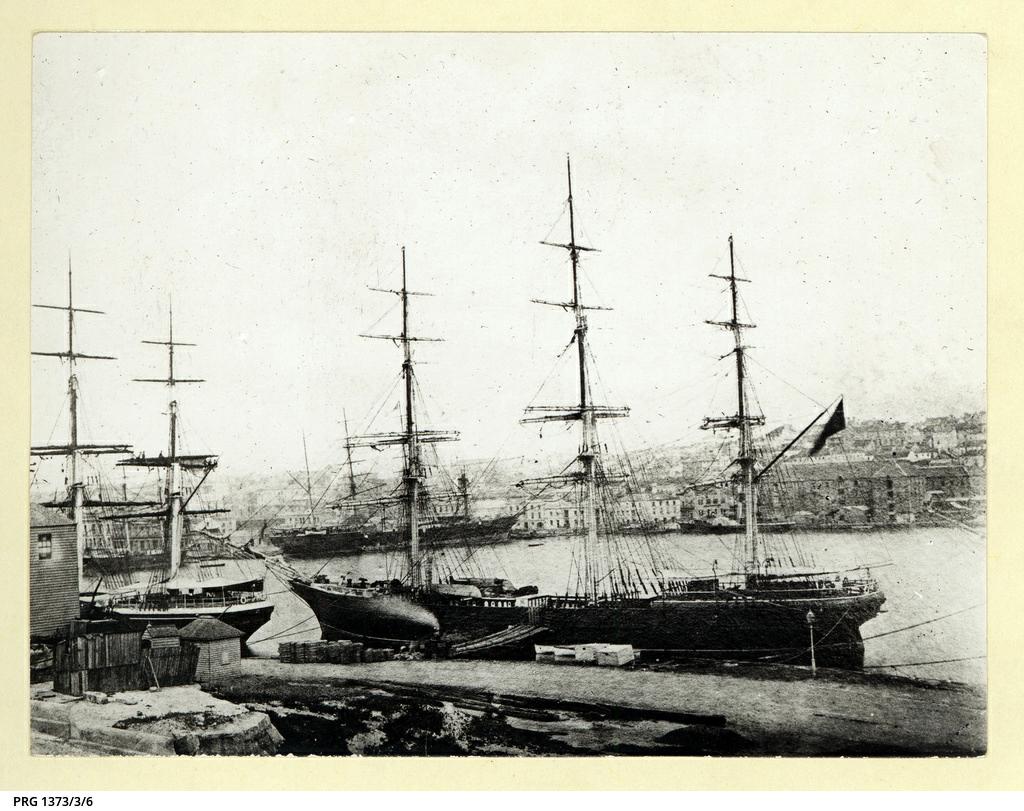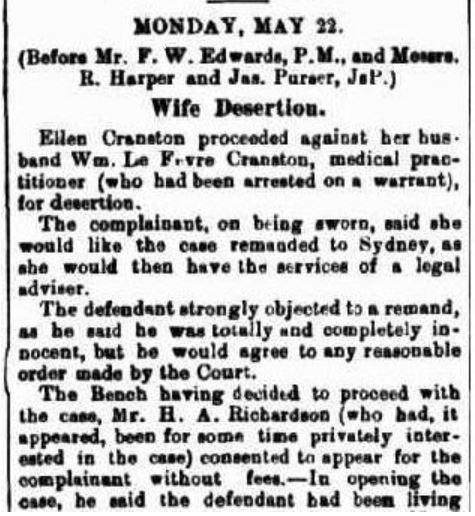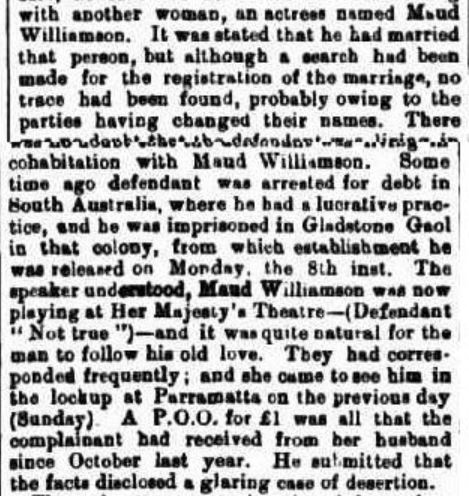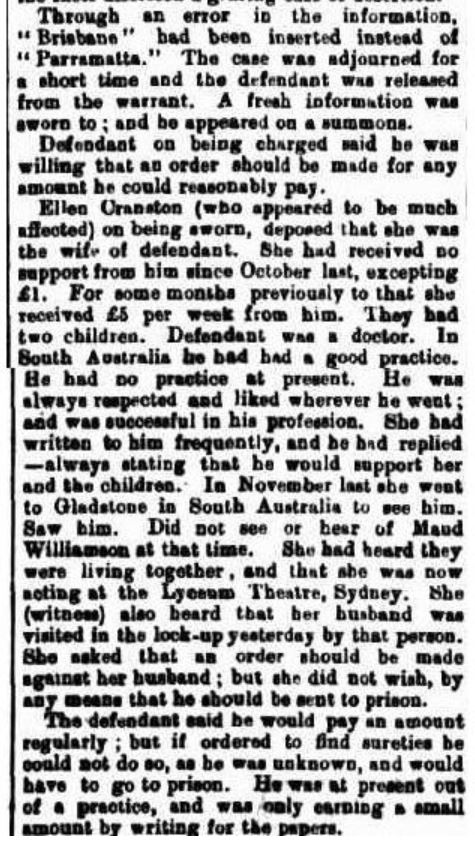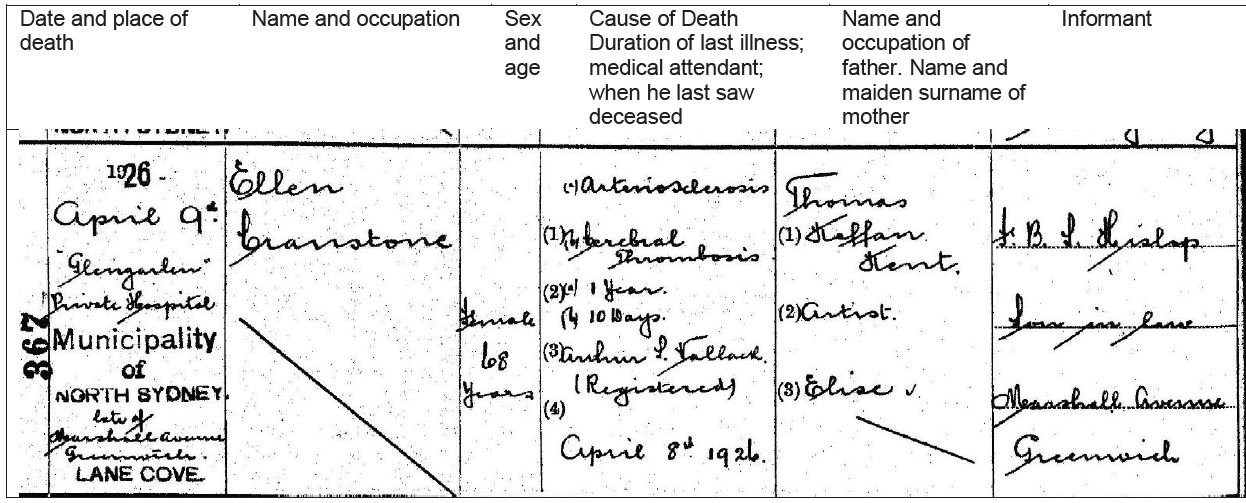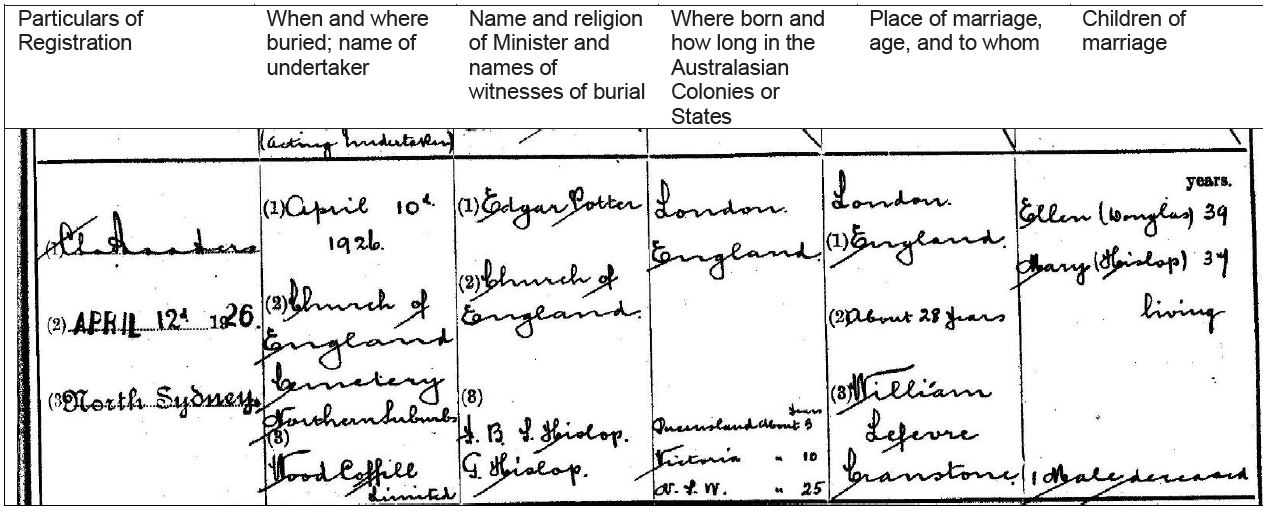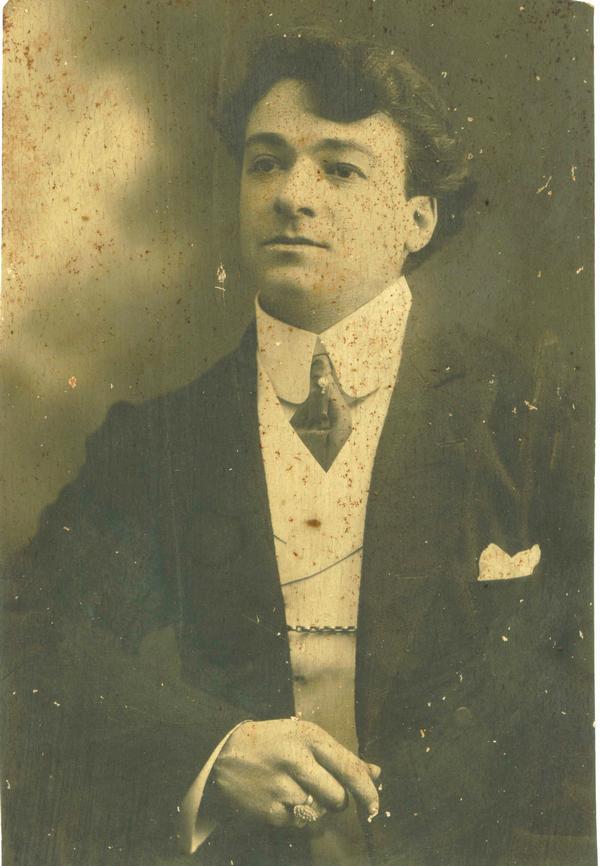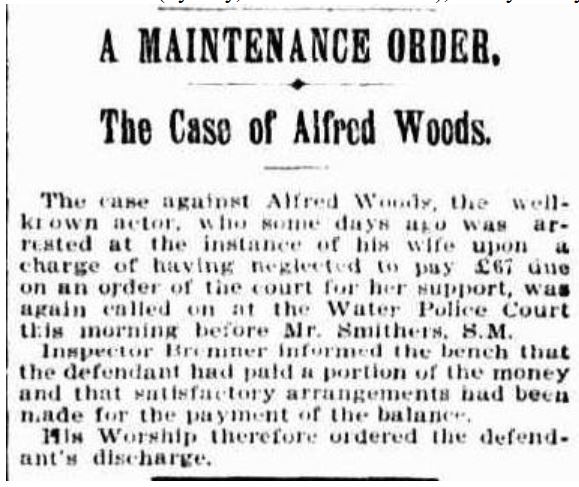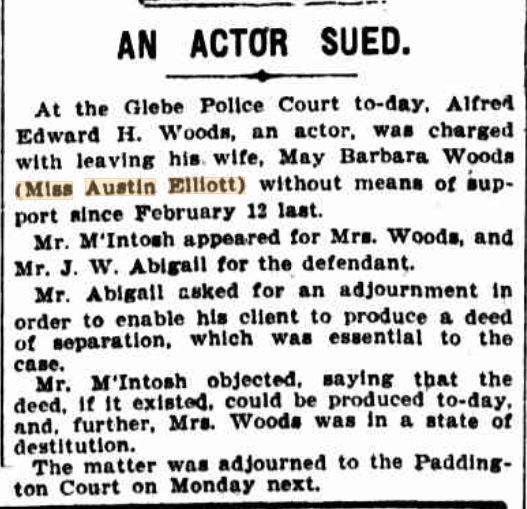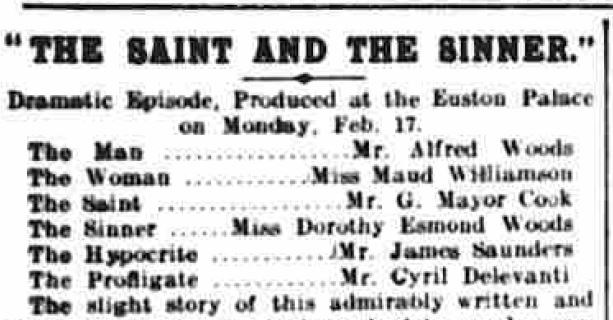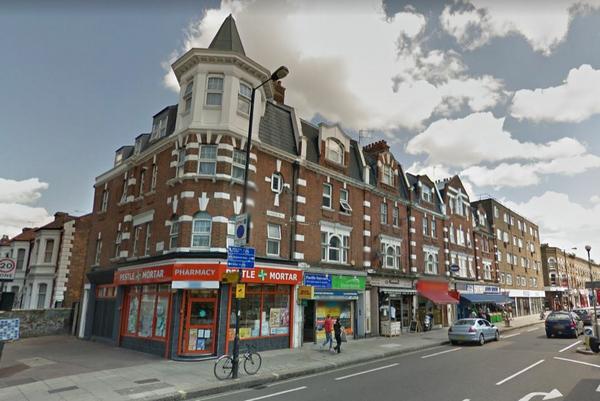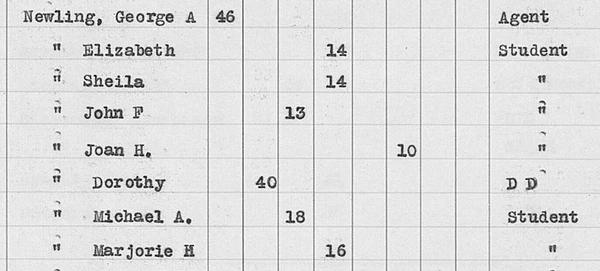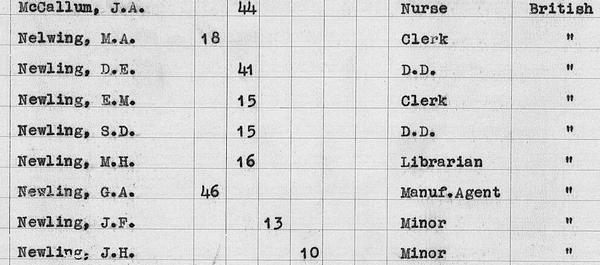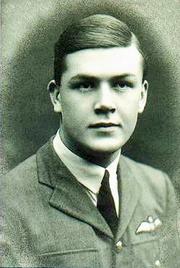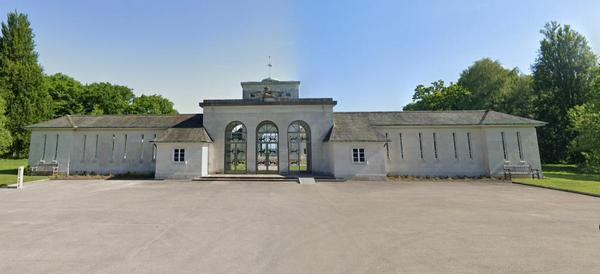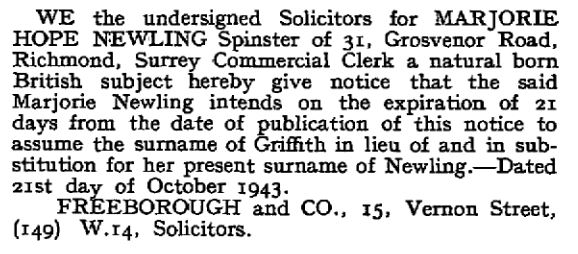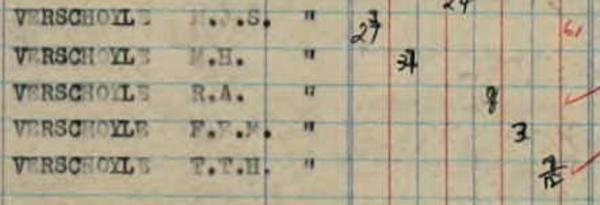The Goldsworthy Family Of Devon and LondonMaud Mary WILLIAMSON 1859-1942
Maud Mary WILLIAMSON (1859-1942) - ActressMaud Mary was born in mid-1859 to William WILLIAMSON and Anne Sarah (GOLDSWORTHY). The family was living at 10 York Terrace, St Paul's Road at the time. Maud was baptised at St Paul Canonbury, Islington on 19 October 1859.
Soon after the baptism the family moved to the Goldsworthy's bakery at 10 New St with Anne's parents John and Mary GOLDSWORTHY where Maud was recorded in the 1861 and 1871 censuses.
By 1881 Maud had left home to become a draper's assistant. She lived at 12 Henrietta St, Covent Garden. The street became popular with mercers and drapers. Number 12 was erected in 1876–9 under a seventy-year Bedford building lease for Richard Michell, the proprietor of Ashley's Hotel, which had occupied No. 13 since about 1857. The Henrietta Street front incorporates the monogram of the hotel. (See Wikipaedia). Maud lived here along with 54 other drapery staff. More lived next door at Number 13. In this environment Maud was surrounded by the popular theatres of the time and she would have met many of the well-known theatre people, so it not surprising she become an actress. But, according to interviews Maud gave to the Press, her interest in acting began many years earlier so it is likely she found work as a draper in that area to support her acting while still an amateur. In her first interview in Australia in April 1889 she commented that she began her theatrical career with the Kendals on January 31, 1883.
To backtrack, after several years of success in London and the "provinces" Maud Williamson travelled to Australia, arriving in Melbourne in March 1889 on the ship RMS Cuzco. Maud and the company then travelled to Adelaide for her first performance in Australia on Saturday 20 April 1889 at the Theatre Royal. The Cuzco was an iron barque-rig steamer of 3845 tons, built in Glasgow in 1871. It is interesting to note that a passenger on the RMS Cuzco, bound for Brisbane, was a Dr Cranstone.
Maud was well-received by the critics and the show was a success. We know little of Maud's early life in Adelaide apart from her stage career but we can speculate that she had drawn the attention of a young medical doctor from Queensland who had shared the saloon on the ship Cuzco from London to Melbourne. So it was that on 5/6 June 1891 two Adelaide papers reported:
A few days later other papers followed with this news. Table Talk in Melbourne report on 12 June 1891 that "Miss Maud Williamson, the actress, has retired from the stage and is about to take up her residence in Adelaide, her husband, Dr. Cranstone, having taken a house on Botanic Terrace, and will shortly commence the practice of his profession in the capital of South Australia." Maud and Dr Cranstone settled into Adelaide society. On 20 October 1891 The Advertiser Adelaide reported that Mrs Dr Cranstone (Miss Maud Williamson) contributed to an excellent concert programme. On 26 February 1892 the Southern Cross Adelaide reported on a fund-raising event in aid of Saint Andrew's Church in Hammond, where Dr and Mrs Maud Cranstone (née WILLIAMSON) performed. Clearly, Maud did not retire from the stage, nor did either of them remain in Adelaide for long. In early 1892 Dr Cranstone set up a doomed medical practice at Orroroo in rural South Australia. Dr Cranstone was bankrupt and spent February to May 1893 "temporarily indisposed" at Gladstone Gaol. Maud now returned to the stage full time, on 1 April 1893 she performed to an audience of 12,000 people at the Exhibition Festival in Melbourne. On 13 April 1893 she appeared in the Bijou Theatre in Melbourne, then in June at the Lyceum and in September at the Theatre Royal. On 27 October 1893 The Age reported on the opening night at the Theatre Royal featuring Miss Maud Williamson, but on 3 Nov 1893 The Herald reported Maud had won a claim in court for £40 in wages owing by J. Parker Hall of the Theatre Royal. From 1893 to early 1897 Maud continued with a full schedule of stage acting. She seems to have been based in Melbourne but also appeared in Sydney, Brisbane and elsewhere. In March 1897 she moved to Brisbane for a season with the Holloway Company but on 10 March 1897 she was taken to hospital in a critical condition. We can speculate that she was suffering exhaustion but there was a deeper cause. Meanwhile Dr Cranstone remained in Melbourne. Maud remained out of the limelight until the end of June. Again the gossip columnists found out the cause.
Indeed, Maud had given birth to a daughter - Dorothy Esmond Cranstone WILLIAMSON - on 11 June 1897. The father is not identifed on the certificate, but the daughter's name confirms that it was Dr Cranstone.
Soon after this, the Daily News Perth reported on 31 July 1897 that Miss Maud Williamson had reappeared with the Holloway Dramatic Co. at the Brisbane Opera House. Then she moved to Sydney for a season at the Lyceum. Here she was once again interviewed - she was now a "theatrical favorite".
The stories of Maud's on-stage exploits lived on long after she had left Australia. The story mentioned above of her being whisked off to the heavens lost nothing in its retelling 22 years later:
Back to Miss Maud WilliamsonIn October 1897 Maud (and presumably her young daughter Dorothy) moved to Sydney for a season at the Lyceum Theatre. Dr Cranstone appears to have remained in Melbourne. The Area Express (Booyoolee, SA) reported on 6 May 1898: "Dr. W. L. Cranstone, who had compulsory residence in this town for six months some years ago, is now residing with his wife and family at Elgin-street, Carlton, in Victoria, and is said to be doing well. He has his favorite dog, and the medico looked even younger than he did when at Gladstone. Miss Maud Williamson is said to be making her mark once again in the theatrical world".
Life with Edward Alfred Henry CORK - also Alfred WOODSMeanwhile, an aspiring young actor was making his mark in Newcastle, NSW. He was Alfred Edward Henry CORK, otherwise known professionally as Alfred WOODS (Woods being his mother's maiden name). He moved to Sydney in May 1892 then to Brisbane. He returned to Sydney to manage Her Majesty's Theatre but in 1896 he was adjudged bankrupt. Around this time he met up with Maud Williamson and by October 1897 Alfred Woods and Miss Williamson were being billed together at the Lyceum in Sydney. Alfred and Maud formed the Woods-Williamson Company and took the company on a tour of New Zealand. Their first appearance was in Auckland on 3 September 1898 and they returned to Australia on 8 April 1899. Although they toured extensively and received high praise, patronage was poor and they could not afford to pay the salary of some of the company, leaving them stranded in Dunedin. Undeterred, they returned to New Zealand again in 1903, 1904 and 1905.
After their 1905 time in New Zealand Alfred, Maud and Dorothy (all under the name of "Woods") boarded the steamship "Sierra" in Auckland on 20 April 1905 and arrived in San Francisco on 8 May 1905. They took with them several Australian and New Zealand actors and opened a season at the Grand Opera House in San Francisco on 12 June 1905. They then sailed for London in March 1906.
After some time in London, Alfred, Maud and Dorothy toured South Africa. They departed from Durban on the "Gothic" and arrived in London on 3 December 1912.
After South Africa, Maud and Alfred appear to have settled in London, although they still appeared on stage. In October 1906 the Sunday Times in Perth, in a rather patronising note, reported that "Maud Williamson and Alfred (Cork) Woods were recently showing in a painfully suburban theatre near London. Alfred still wears his hair long and threatens everyone with stoush who criticises his rantings." Unfortunately Maud and Alfred were out of the country when the 1911 census was taken, either back in Australia or in South Africa. Alfred appears to have found other employment beyond the stage. In 1922 Alfred visited South Africa alone, returning from Cape Town to London. In 1925 he visited New York, his occupation this time being "author's representative". Despite holding themselves out as Mr & Mrs Woods, Alfred and Maud were not married. Indeed they could not marry as Alfred had married in Australia in about 1892. But on 10 June 1925 they did finally marry at the Registry Office, Pancras, London. Alfred's wife May Barbara had died in Sydney in 1920. Alfred was named as Edward Alfred CORK and Maud claimed to be Maud Mary CRANSTON. As far as we know, she never married William Cranstone. She could not do so as he too was already married and his wife Ellen died sevral years after him.
Alfred and Maud did not retire from the stage. They delivered over 500 performances of their play "The Saint and the Sinner" to London audiences (Alfred in an interview claimed 600). They were almost continually on stage. For instance they presented an "excellent programme" at the Palace Theatre in Derby in January 1914 and featured at the Theatre Royal in Sheffield in 1927. They featured in "vaudeville and melodrama of high standard" at the Victoria Theatre Dundee in March 1932. Then they discovered radio. On 28 September 1934 they delivered their first radio broadcast, being their tried and tested "The Saint and the Sinner". In London, they based themselves in Hammersmith. The electoral rolls tell us Maud ansd Alfred lived at 388 Uxbridge Rd, Hammersmith in 1918-1922, then 85 Sterndale Rd in 1929-1931. In 1933 they were at 12 Mall Rd, then in 1934 they had moved to 75 The Grove (renamed Hammersmith Grove on 1 Jan 1938) where they remained for the rest of their lives. They were recorded in the 1939 register at 75 Hammersmith Grove. The register records actual dates of birth, but for Alfred and Maud these are wildly inaccurate, Alfred's should be 1867 and Maud's 1859. We could assume the day and month are correct. Afred would have been 72 and Maud 80 in 1939.
Maud Mary WOODS (née WILLIAMSON) died at Hammersmith Hospital on 17 February 1942 of cardiac failure. She was followed a year later by Alfred who also died of cardiac failure.
What an amazing life Maud Williamson had. The Goldsworthy family obviously had a gift for drama and theatre. Maud's uncle George Goldsworthy for instance (my great-grandfather), was a raconteur of stories true and tall - he never tired of telling of his adventures chasing Ned Kelly the infamous Australian bush ranger (although he never got within 100 miles of the Kelly Gang). George and his family spent several years in Sydney at the same time that Maud was on stage - I would be surprised if George did not attend some of Maud's shows. Indeed my grandfather William Froggatt, who married George's daughter Eliza Agnes, was also in Sydney at that time so probably met Maud. The child of Maud WILLIAMSON - Dorothy Esmond Cranstone WILLIAMSON also Dorothy WOODSDorothy Esmond Cranstone WILLIAMSON was born in Brisbane on 11 June 1897. A father is not named on the birth certificate but we can be sure it was Dr William Cranstone, otherwise why put Cranstone as a middle name?
We see nothing of Dorothy in her early years, but we can presume she travelled with Maud as she continued her stage career. Maud might have employed a nurse-maid to assist her. We know from Maud's own history that she had experience of day-care, being enrolled from aged 3 while living at the Goldsworthy bakery in London. The first record of Dorothy with Maud (and Alfred Woods) is the 1905 shipping record for their passage from Auckland, New Zealand to San Francisco when Maud was aged 7. She then accompanied them to London and South Africa and back to London. Not surprisingly, we soon see Dorothy on stage with Maud and Alfred in their long-running play "The Saint and the Sinner". In this 1913 show Dorothy would have been only 15 years old.
The next we see of Dorothy is her marriage on 25 March 1919 to Captain George Arthur NEWLING at St John the Baptist, Kensington. The marriage certificate is interesting for two facts - Dorothy's father is recognised as William Cranstone and one of the witnesses was Stanley BOWCHER, Dorothy's first cousin once removed. The presence of the Bowcher relations confirms Maud reconnected with her Goldsworthy and Bowcher family when she returned to London.

George Arthur NEWLING was born 6 September 1891 at Beeston, Nottingham to John Arthur NEWLING and Eliza Butler OSBORNE, the third of eight children. His father was a newpaper editor. George enlisted for officer trainign in 1916 and on completion joined the Royal Marines Light Infantry (RMLI), Chatham Division. He was sent to France, joining the 2nd RM Battalion on 14 Dec 1916. He rose to Adjutant in 1917 and was appointed as Acting Captain. He was wounded during the attack on Poelcappelle on 26 October 1917 and was invalided home to recover. He returned to France in March 1918, was again wounded with gun shot wounds to the chest and arms and returned home. He resigned his commission on 31 July 1919, a few months after he had married Dorothy. His record note "resigned on account of medical unfitness caused by wounds received in action. Allowed to retain his rank and to wear uniform on state or other occasions of ceremony". George was awarded the Military Cross in 1917 and a bar to the Cross in 1918. George and Dorothy had five children.
In 1939 George and Dorothy with 5 children were living at 43 Kensington Hall Gardens, London. Oldest son Michael was a pilot in the RAF by this time.
The family, Dorothy in particular, travelled overseas several times. In 1938 Dorothy and George took the six children first to New Zealand, arriving in Wellington on 21 April 1938 on the "Arawa" then to Sydney, Australia on 1 August 1938, departing Sydney for London on board the "Strathmore" arriving back in London on 16 September 1938. Ten years later Dorothy and youngest daughter Joan boarded the "Queen Mary" on 28 January 1948 bound first for New York. In 1949 Dorothy and Joan again sailed for Australia from London, arriving in Freemantle on 5 April 1949 and arriving back in London on 5 November 1949.
The next event we know is the death of George NEWLING on 18 January 1967 at Truro, Cornwall. Of the children of Dorothy and George NEWLING: Michael Alan NEWLING Michael was born 28 February 1920 at Barnes, Surrey. He attended Oakham School, Rutland from 1933 to 1937, when the family sailed to New Zealand, then Australia and then back home. According to his cousin (Adrian WILLIAMS - see biography here) "Michael joined the RAF, one of 20 selected from over 300 applicants when he applied. He was fully trained (at Uxbridge and Kenley) as a day/night pilot by the time war was declared. He was stationed with 145 Squadron and based at Tangmere, near Chichester, Sussex. He was recalled from holiday in Cornwall in June 1940 to fight in the Battle of Britain. He destroyed three aircraft (two over Dunkirk) and shared in several others during June and July. On 19th July he brought down a He111P over Southampton. On May 18, 1940, Hurricanes of 145 Sqn landed at the French base Merville, arriving from Manston. That same afternoon, a flight was dispatched to intercept a formation He111's of Kampfgeschwader 4, flying west of Brussels. At least one Heinkel was shot down, but because of combat damage, F/O Michael Newling was forced to leave his formation and to fly towards his base. Over the village of Pamel-Roosdaal (province of Flemish Brabant), Newling was forced to abandon his Hurricane. He landed safely by parachute and was led trough the German lines by a 13-year old boy. He crossed the Dender river and was picked up by a British vehicle. Michael Newling fought during the Battle of Britain, shot down and damaged several Luftwaffe aircraft, and survived four crashes. Michael was mentioned in despatches on 1 January 1941 and was awarded the DFC on 4th February 1941.The citation for this in the London Gazette for 4 February 1941 reads: "This officer has been continuously engaged in active operations since May 1940, and has at all times displayed marked courage and leadership. On one occasion during an attack against a large force of enemy bombers, he was shot down into enemy territory, but with great determination succeeded in gaining his own lines. Flight Lieutenant Newling has destroyed at least three enemy aircraft and assisted in the destruction of several more.” He shared a Ju88 on 1st March 1941 and in the early summer was posted as a flight commander to 111 Squadron. On 27 June he probably destroyed a BF109 and on 6 July 1941 was reported missing in action. His plane (Spitfire W3366) was probably damaged near Lille, France and he went missing over the North Sea trying to return home. Michael’s body was never recovered and he is commemorated on the Runneymede Memorial as one of the more than 20,000 RAF personnel lost in WW2 operations from bases in the United Kingdom and North and Western Europe, and who have no known grave. His war time exploits mean that he is one of 646 “Aces” credited with destroying at least 5 enemy aircraft.
Marjorie Hope NEWLING/GRIFFITH Marjorie Hope was born near Steyning in 1922. In 1943 she changed her surname to GRIFFITH as notified in the London Gazette on 29 October 1943. We do not know what prompted the change or when she started using the Griffith surname, but if it was a few years earlier, there is a shipping record for a 16 year old Miss M.H. GRIFFITH, student, travelling to Melbourne Australia on the Orontes, departing London 23 September 1939. If this is Marjorie Newling then she had returned to England by 1943 unless she instructed the lawyer by letter to change her name to Griffith. But we know Marjorie definitely returned in England as she married Michael John Stuart VERSCHOYLE in 1947 in Hove, Sussex. They had two children before emigrating to Perth, Western Australia where Michael, who was a "scientist" on the voyage out tried his hand at farming at Cowaramup (a small settlement 250km south or Perth). Apparently this did not last as the family, now with another child, returned to England in 1953.
Back in London, Marjorie Hope appears to have lived apart, with Michael eventually returning to Australia. There is an electoral roll record for him in Brisbane in 1977 and a Gazette notice of him being granted Australian citizenship on 22 December 1980.
Elizabeth Mary NEWLING Elizabeth was born 26 July 1923 at Steyning, along with her twin sister Sheila. Elizabeth married Milton Francis WILLIAMS in Surrey in 1946. They had 3 children. Elizabeth died 7 February 2009 at Bexley and was cremated at Eltham Crematorium. Sheila Dorothy NEWLING Sheila was born 26 July 1923 at Steyning, along with her twin sister Elizabeth. She married Rowland Sidney Hawdon PENNEY in Westmorland in mid-1941. They had one daughter. Rowland died in 1996. John Fordham NEWLING John was born in late 1924 in London. He married in London in 1950 and had 5 children. The family lived in Wales in the 1960s until they emigrated to Sydney, Australia where John was a boat builder and a keen surfer. Joan Hilary NEWLING Joan was born in 1927 in Nottingham. She married Ivor Brind BURNELL-JONES in 1952 in Surrey and had 4 children. The family also emigrated to Australia, ending up in Queensland. Ivor died at Noosa, Queensland on 26 July 2015. Return to Anne Williamson page Return to John Goldsworthy page Last updated: 17 June 2021 |
|||||||||||||||||||||||||||||||||||||||||||||||||||||||||||||||||||||||||||||||||||||



